Tucked away beneath the famous Acropolis in Athens, I stumbled upon Anafiotika—a tiny neighborhood that honestly feels like a hidden island village. Wandering through Anafiotika, I almost forgot I was still in Athens; it felt like I’d stepped into a slice of the Cyclades, right in the city’s heart.
The narrow paths, whitewashed houses, and wild bougainvillea made the city noise fade away for a while.
Exploring Anafiotika felt like uncovering a secret most people walk right past. It’s so quiet and peaceful—like a small Greek island, but with Athens’ history just a stone’s throw away.
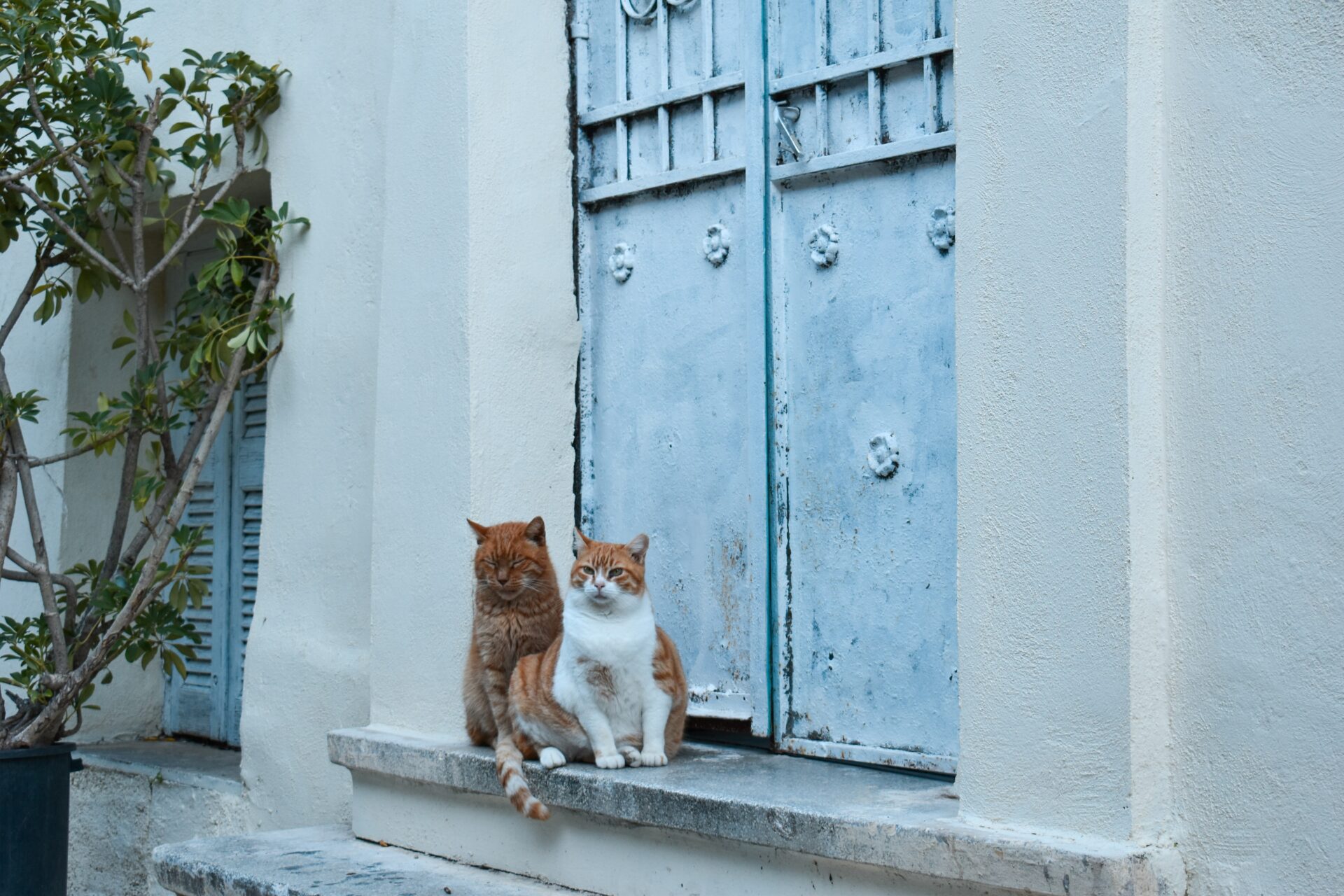
Every turn offered a new scene, and honestly, every corner seemed to have its own little story.
Anafiotika’s Hidden Story: A Cycladic Secret Beneath the Acropolis
As I wandered into Anafiotika, time seemed to slow down. Set right under the towering Acropolis, this tiny spot layers Greek history and island vibes into Athens’ busy center.
Origins of Anafiotika
Workers and craftsmen from the island of Anafi built Anafiotika in the mid-1800s. They came to Athens to help construct King Otto’s palace, bringing their island ways and building know-how with them.
Most of these early residents worked as stone masons or carpenters. They settled on the steep hillside above Plaka, just under the Acropolis, and carved out a cluster of simple homes.
Every house was designed to remind them of Anafi, even as Athens grew around them. The city officially lists the area as part of Athens, but honestly, when you walk the alleyways, it feels worlds away.
Families have passed down these homes for generations, keeping Anafiotika’s traditions alive. When I hear local voices bouncing off the walls, it’s like listening to living Greek history.
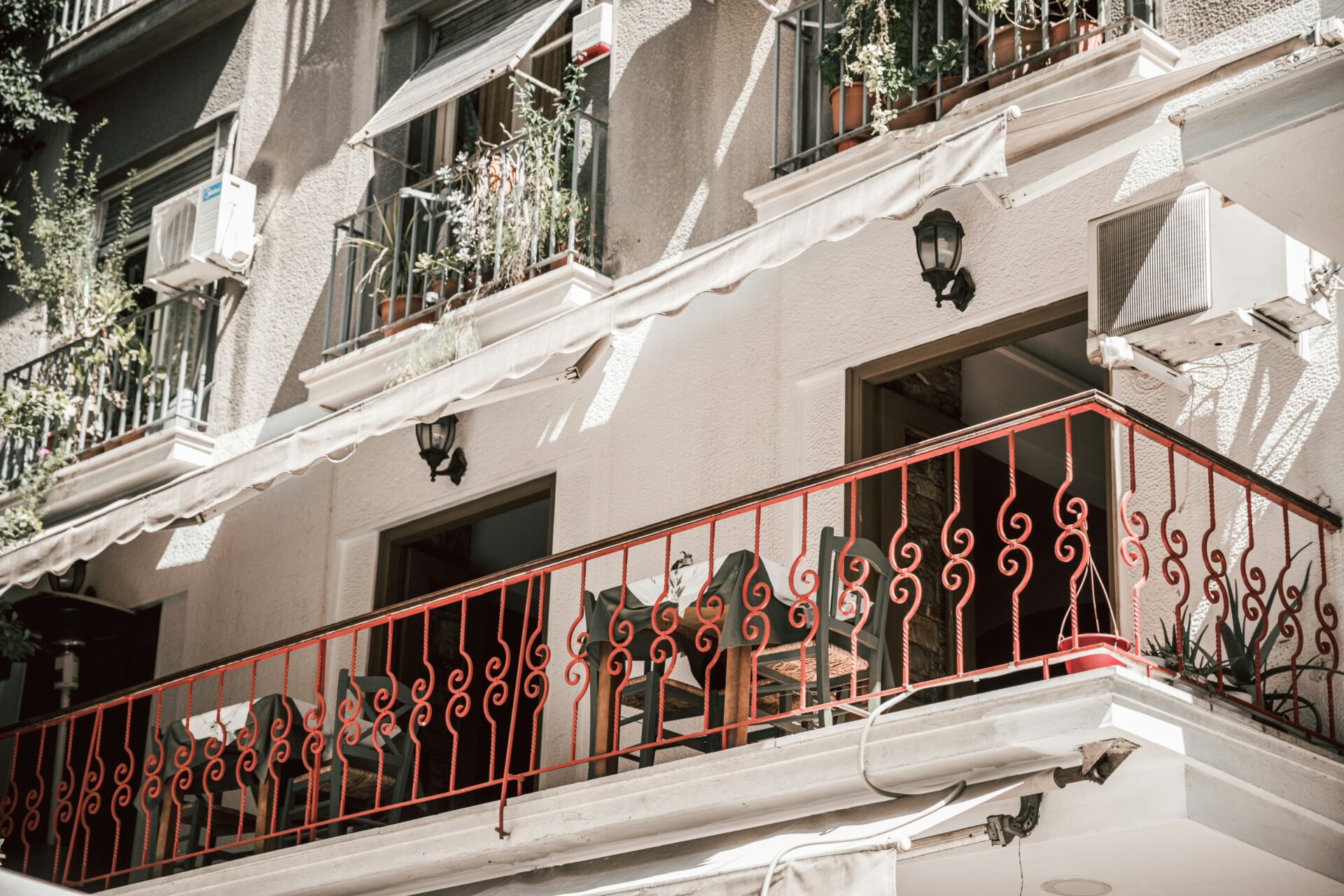
The Cycladic Spirit in Athens
Anafiotika stands out because it brings the Cycladic spirit right into Athens. Whitewashed walls shine in the sunlight.
Narrow passageways twist between tiny homes, and every corner feels like a new little discovery. Brightly colored doors and potted flowers line the steps—details I’d expect on a far-off island, not under the Acropolis.
The scent of Mediterranean herbs drifts through the alleys, and I often catch neighborly chatter through open windows.
This pocket of island life in the middle of Athens really shows how cultures blend to make something unique. The pace here is slower.
Tourists might rush through Plaka, but Anafiotika almost insists that you slow down and just wander.
Architectural Charms and Neoclassical Houses
Anafiotika’s architecture stands apart from the neoclassical buildings you see elsewhere in Athens. Most houses here are cubic and painted a crisp white, inspired by Cycladic island homes.
Roofs are flat, and the doors and shutters are often blue or green—sometimes other bright colors. Even though the houses are small, each one feels special. Some have tiny balconies overflowing with flowers.
Others show off stonework that hints at the original settlers’ skills.

Here’s a quick way to spot what makes Anafiotika’s architecture unique:
| Feature | Anafiotika | Typical Athens Neoclassical |
|---|---|---|
| Wall color | Whitewashed | Pale yellow, pink, or beige |
| Roof type | Flat | Tiled, sloped |
| Door/window colors | Blue, green, or bright hues | Deep reds, browns, or greens |
| Street layout | Maze-like, narrow alleys | Grid-like, wider avenues |
Locals work hard to preserve these buildings as part of Athens’ cultural heritage. Anafiotika’s timeless look keeps the old world alive right beneath the Acropolis.
Strolling Through Anafiotika: My Perfect Walking Tour
Anafiotika feels like a hidden Cycladic island pressed up against the Acropolis. Every corner is shaped by whitewashed homes, splashes of bougainvillea, and a sense of life that’s both timeless and lived-in.
Wandering here, I found art, local food, and hints of ancient Athens popping up as I walked.
Navigating Winding Alleyways and Cobblestone Streets
Getting lost in Anafiotika is honestly part of the adventure. The narrow alleyways twist sharply and climb the slope of the Acropolis.
Cobblestone streets glint in the sun, and the bright white walls hint at their island roots from those Anafi workers in the 1800s.
Street signs? Hardly any. How to find your way: slip past hidden doors, peek around blue shutters, and keep an eye out for cats lounging in the shade.
Locals know these shortcuts, but I’d say just slow down and let yourself wander. Every turn offers a dreamy view—maybe over faded clay tiles, maybe up toward the ancient walls above.
I kept my phone handy for walking tour videos—they helped me spot details I might’ve missed. Online maps are useful, but honestly, following my curiosity made the walk even better.
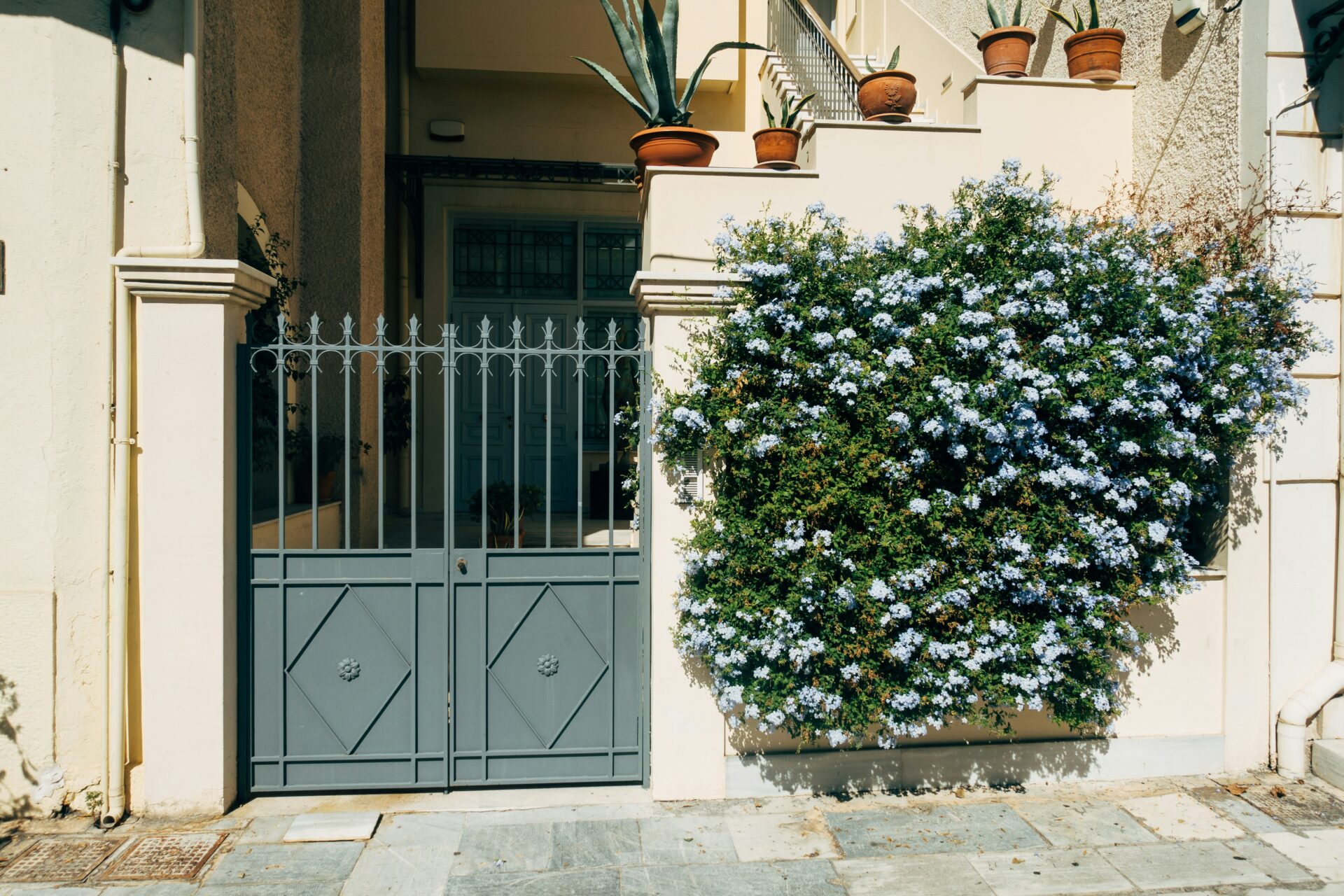
Charming Taverns and Local Life
Even though Anafiotika is tiny, it buzzes with energy. Traditional tavernas spill into narrow lanes, their tables covered in checkered cloths and fresh bread.
I stopped at a hidden spot where locals chatted over glasses of retsina.
Here’s what really stood out:
- Menu staples: Grilled octopus, feta salads, olives, and fried zucchini.
- Atmosphere: Laid-back, no one’s in a hurry—people linger, letting conversation flow.
- View: Many tavernas perch at odd angles, so every seat has a view—either over Athens or up to the Acropolis.
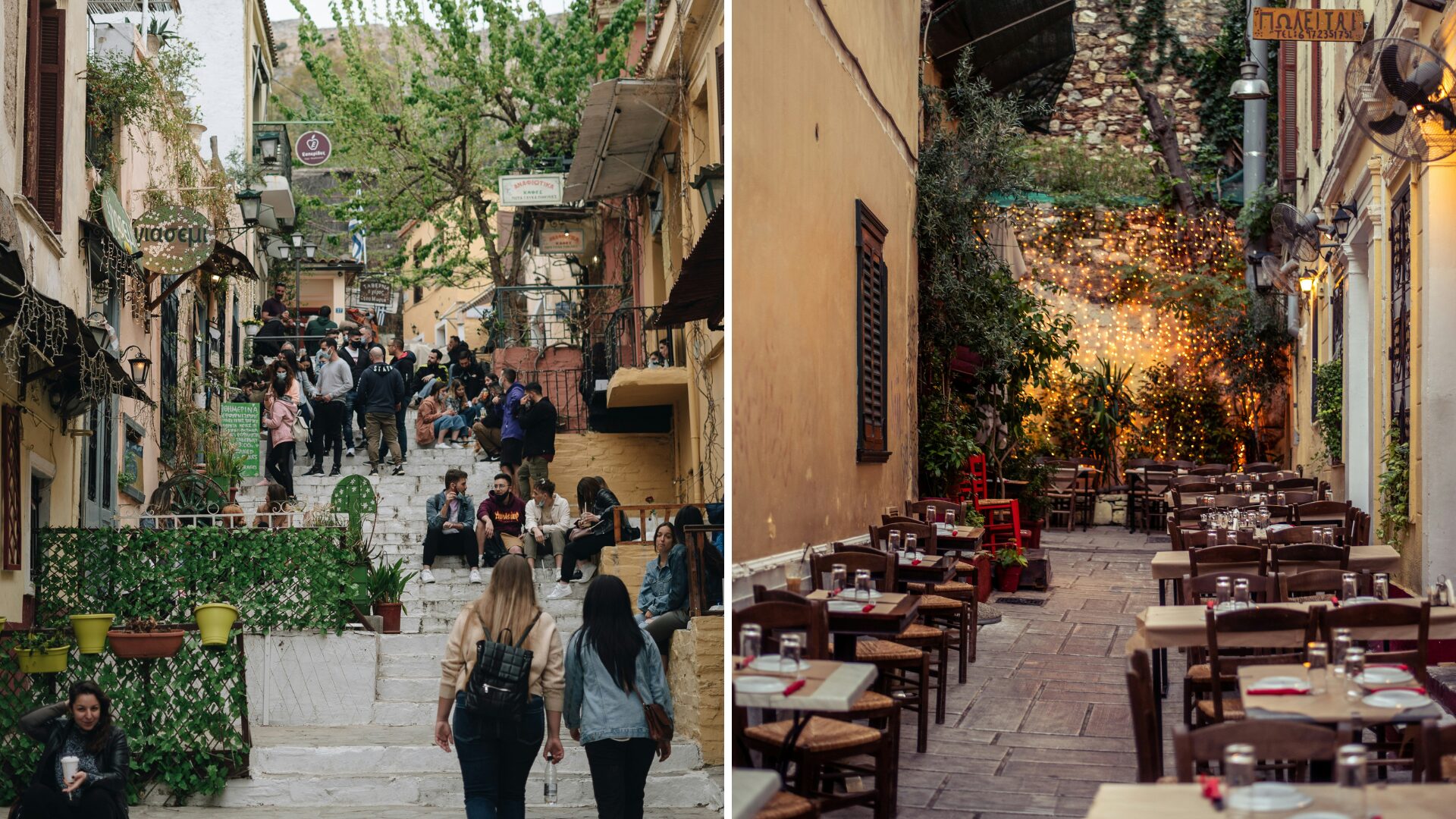
I loved watching families gather for lunch and artists sketching scenes of daily life. This is where Anafiotika feels most like a real village, tucked away from the city’s rush.
Artistic Corners and Hidden Art Galleries
Anafiotika hides tiny art studios and colorful murals around its bends. Bright paintings on plaster walls make the village feel like an open-air gallery.
Some doors are marked with paintings of Cycladic houses or blue waves, leading down to cool stone rooms. Many locals work as artists or craftsmen.
Sometimes I caught open gallery doors and chatted with the maker about their process or favorite views to paint. The artwork here tells as much of a story as the streets do—landscapes, daily life, and bold splashes of color fill the space.
Artistic highlights:
- Murals inspired by Cycladic folk tales
- Tiny pottery shops with blue and white ceramics
- Pop-up galleries with changing collections
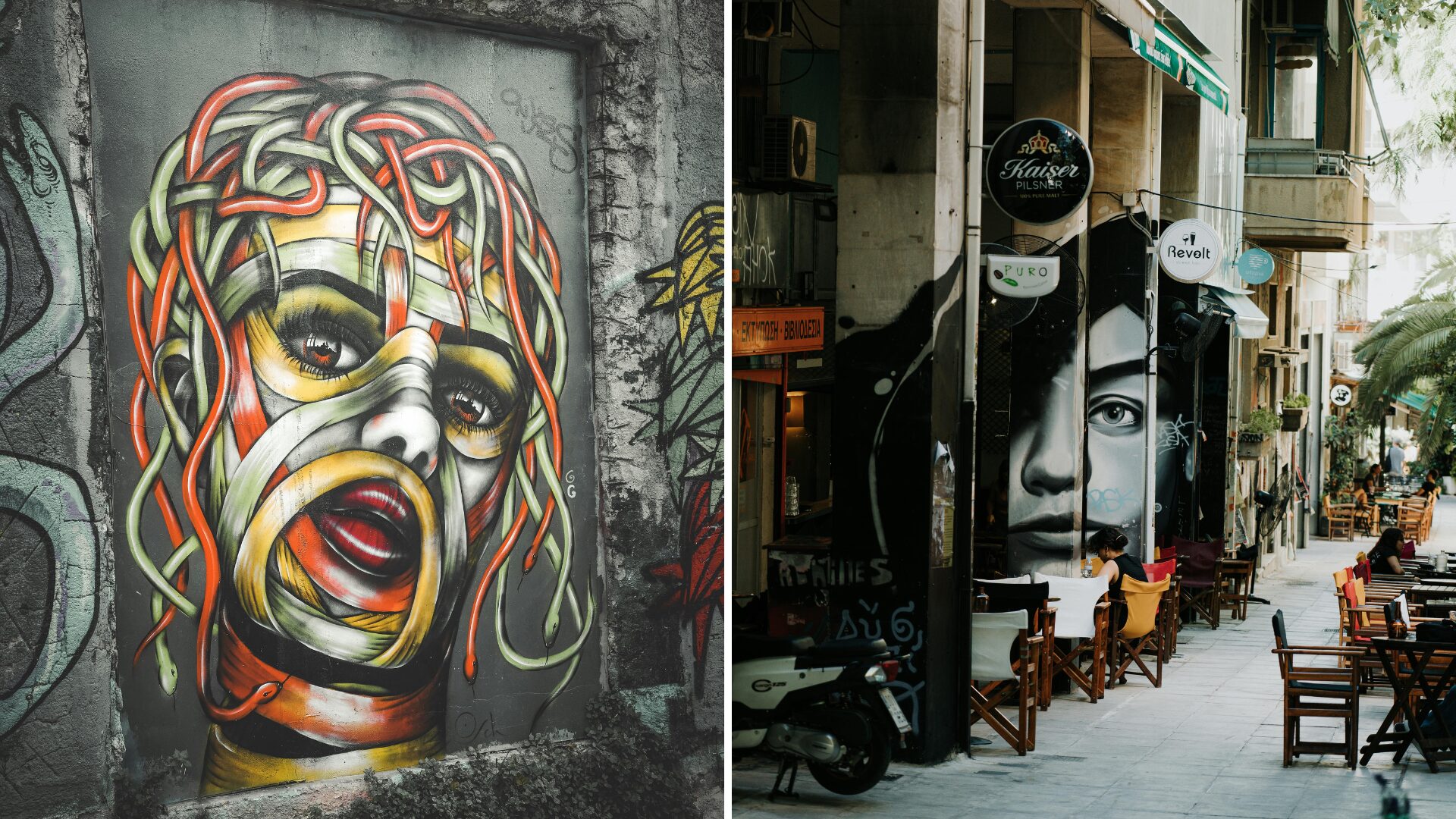
If you visit, check for flyers about local art walks or just ask at a taverna about open studios.
Byzantine Churches and Ancient Ruins
One of the biggest surprises in Anafiotika is how old it feels under the surface. Tucked beside the maze of homes are small Byzantine churches, sometimes just a doorway behind a garden.
Their thick walls are sometimes crumbling, their domes faded in the sun. It’s easy to miss the ancient touches at first, but if you look up, you’ll spot the Acropolis looming overhead.
In some corners, broken columns peek out behind bushes—silent reminders that Athens’ ancient history is right here.
Key sites I visited:
| Church | Unique Feature |
|---|---|
| Agios Georgios | Icon wall, quiet courtyard |
| Agios Simeon | Old frescoes, miniature bell tower |
Standing in these cool, simple spaces, I felt connected to the district’s history. The mix of ancient and everyday life is what makes Anafiotika so unforgettable.

Anafiotika in the Heart of Athens: Exploring Plaka and Surroundings
Stepping into Anafiotika beneath the Acropolis, I suddenly felt like I’d entered a different world. The path leads through some of the most vibrant neighborhoods in Athens, full of color, history, and daily Greek life.
From Monastiraki to Plaka: Immersing in the Historical Center
I started my walk at Monastiraki Square, a lively spot surrounded by ancient ruins and busy cafés. The square sits at the edge of the historical center, making it a great place to launch into Athens’ layers of past and present.
I wandered along narrow streets filled with music and the smell of fresh bread. Every corner seemed to have something new—Byzantine churches, Roman columns, you name it.
Public transportation here is super convenient; both metro and buses drop you right in the action. That made getting around way easier, especially as more tourists show up in spring and summer.
As I climbed higher, Plaka opened up around me. Plaka is known for its neoclassical houses, cobbled lanes, and bougainvillea.
It manages to stay peaceful even though it’s so close to Athens’ big sights. Locals and travelers sit together at tiny cafés and shady courtyards before heading up to Anafiotika’s whitewashed lanes.
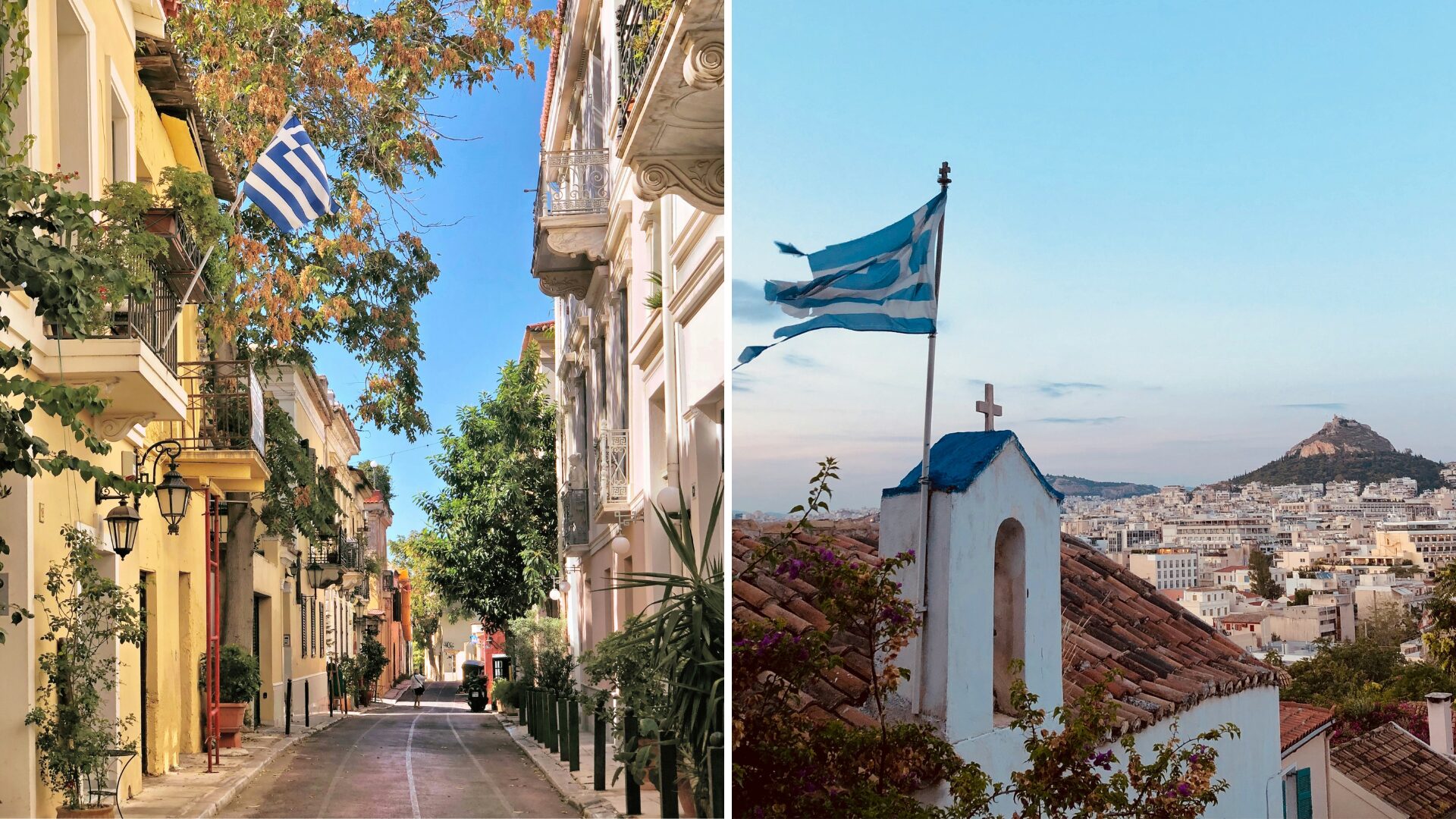
A Blend of Flea Markets and Souvenirs
Walking through Monastiraki, I got pulled into the energy of one of Athens’ best-known flea markets. The area is packed with tables and stalls selling antiques, handmade jewelry, and quirky old records.
Even if you’re not shopping, just browsing feels like a real Athenian experience. Further along, I reached Plaka’s souvenir shops.
These weren’t just tourist traps; I found all kinds of cool stuff—local honey, olive oil, painted ceramics. The smell of spices sometimes drifted over from the nearby central market.
Food and shopping really do go hand in hand in Greek daily life.
Here’s a quick table of my favorite souvenirs and where I found them:
| Souvenir | Where to Find It |
|---|---|
| Handmade sandals | Monastiraki Market |
| Painted ceramics | Plaka boutique shops |
| Greek honey & olive oil | Shops by Central Market |
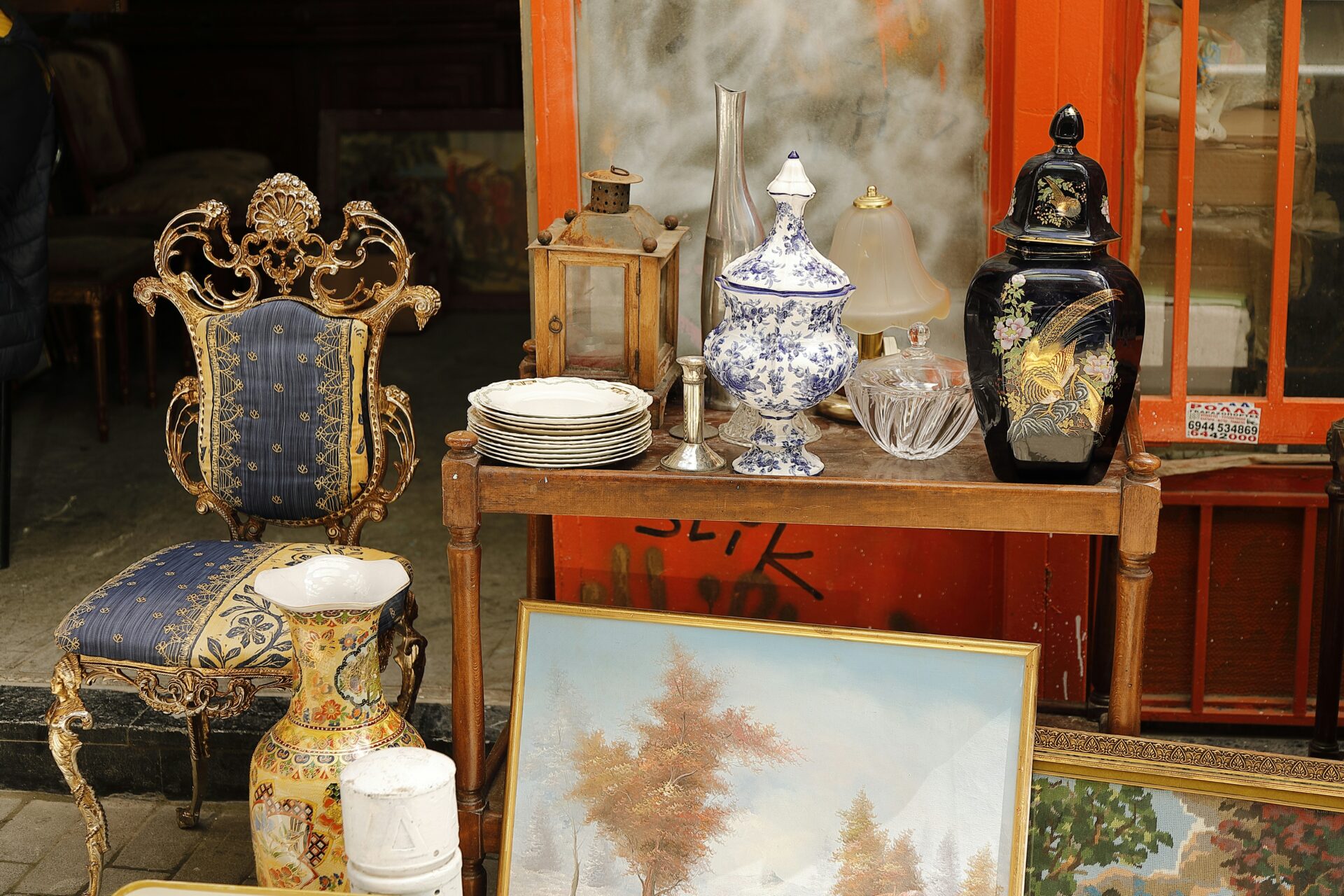
By the time I finished exploring, my bag felt heavier and my camera was full. Every step brought me closer to Anafiotika’s hidden Cycladic magic.
Living Heritage: My Personal Glimpse Into Greek Culture
Anafiotika is more than just a hidden neighborhood; it’s a living slice of Greek daily life and creativity in the heart of Athens. Walking these streets got me close to the rhythms, sights, and sounds that shape the Mediterranean spirit.
Daily Life and the Mediterranean Atmosphere
Narrow paths lined with whitewashed homes bring Cycladic charm into Athens. Locals greet each other while tending flower pots or sipping coffee on tiny balconies.
Life moves at a steady, peaceful pace here. In the early mornings, I saw people sweeping their steps or watering geraniums, always ready with a nod or a smile.
The sun casts soft light across blue doors and hidden courtyards. Cats roam the alleys, and the smell of fresh herbs drifts through open windows.
Eating here feels genuinely Mediterranean. I tried homemade spanakopita from a corner bakery and listened to quiet conversations drifting by.
The atmosphere blends rural traditions with city energy, making Anafiotika feel like an urban Greek island.
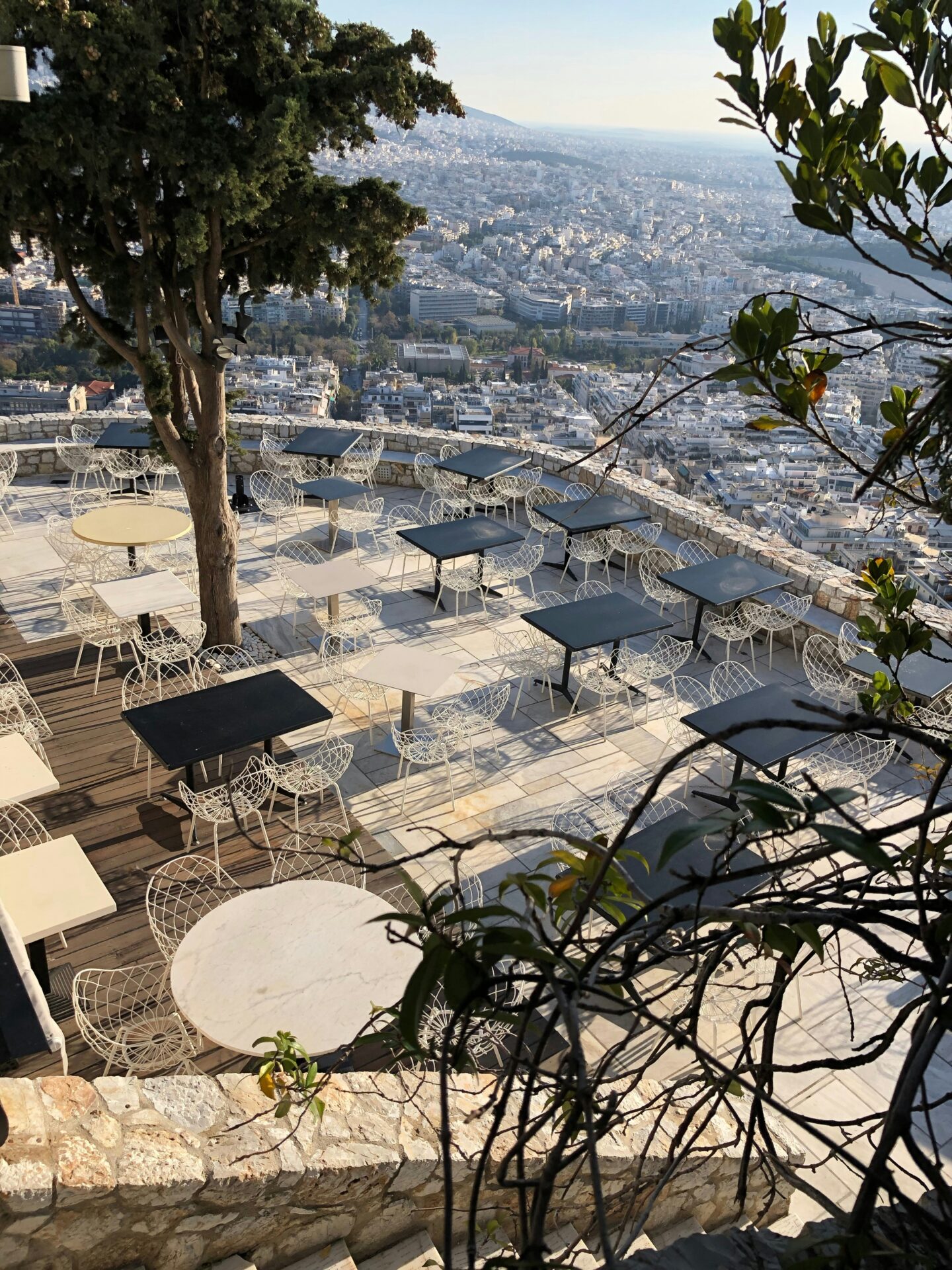
Cultural Scene, Events, and the Arts
Art weaves itself into daily life in Anafiotika. Painted murals, colorful tiles, and handmade pottery fill windowsills and walls, adding splashes of color to the white stone.
I met a local art historian who said many artists draw inspiration from the neighborhood’s architecture and light.
Big events are rare, but spontaneous music and dance sometimes break out in open spaces just below the Acropolis. In the evening, neighbors might gather to share food or play traditional instruments.
Throughout the year, small exhibits or workshops highlight Greek crafts and folk art.
Meeting artisans and watching them work gave me a real sense of living Greek culture. Anafiotika may be small, but it’s an important part of Athens’ cultural scene, always inviting visitors to join in.
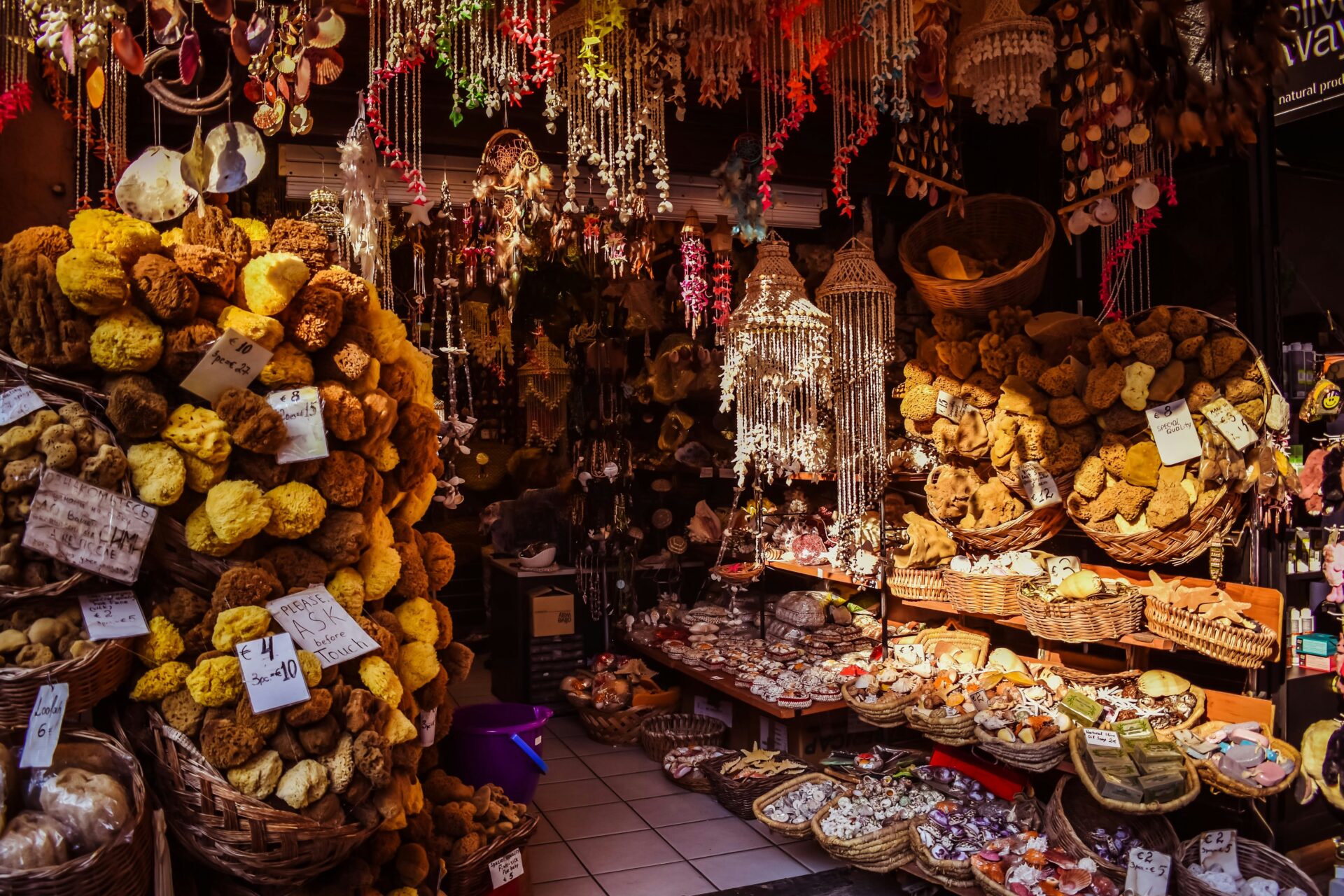
Unmissable Landmarks Around Anafiotika
Walking through Anafiotika puts me right in the heart of Athens’ most intriguing spots. Surrounded by centuries of Greek history, it’s easy to stitch together past and present as I explore the famous ruins, world-class museums, and agoras scattered nearby.
The Acropolis and Parthenon
When you look up from Anafiotika, the Acropolis just grabs your attention. It’s so close—just a short climb from those whitewashed alleys to the ancient columns of the Parthenon.
As I make my way up, the Parthenon slowly reveals itself. Built back in the 5th century BC, this temple really owns the skyline. The marble still catches the sunlight, which honestly blows my mind after all these centuries.
Standing there, I can’t help but imagine philosophers and poets wandering around just like I am. It’s surreal.
Nearby, I stumble onto other ruins—the Erechtheion and the Temple of Athena Nike. From up here, Athens sprawls out below.
You can’t miss the sense of ancient civilization. I find myself thinking about all the debates and dramas that must’ve played out on these stones.

Acropolis Museum and Archaeological Treasures
Once I leave the hill, I head straight to the Acropolis Museum. This place feels modern but connects you right back to history. Huge glass windows flood the space with sunlight and frame the Acropolis outside, which kind of ties everything together in a cool way.
Inside, I get up close to marble sculptures from the Parthenon. There’s also ancient pottery and tools from all sorts of eras. The displays really help me picture what daily life might’ve looked like back then.
I also squeeze in a visit to the National Archaeological Museum. These collections branch out way beyond Athens, showing finds from places like Knossos and Delos.
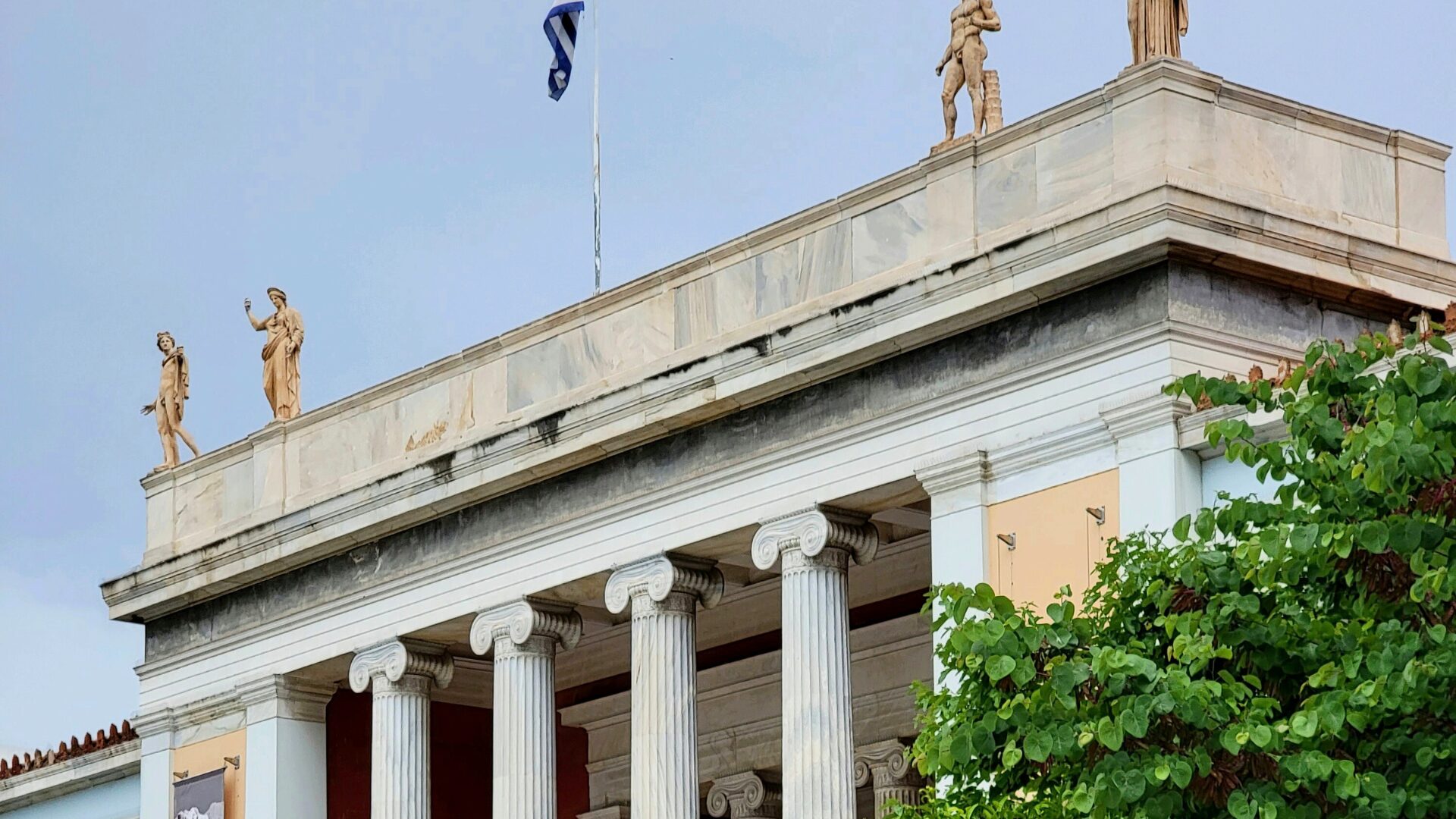
If you’re into the details of ancient civilizations, this spot is a no-brainer.
More Must-See Sights: Agora, Stadiums, and Museums
I wander over to the ancient agoras—those open spaces where Athenians used to gather. The Ancient Greek Agora has temples scattered around and the Stoa of Attalos stands out as especially impressive.
It’s honestly not hard to picture daily life here, with people shopping or maybe great thinkers arguing under those old columns. Just a short walk away, the Roman Agora pops up and gives you a glimpse of another layer in Athens’ wild history.
If you’re into sports, you really should check out the Panathenaic Stadium. This place, made entirely of marble, hosted the ancient Panathenaic Games and later the very first modern Olympic Games.
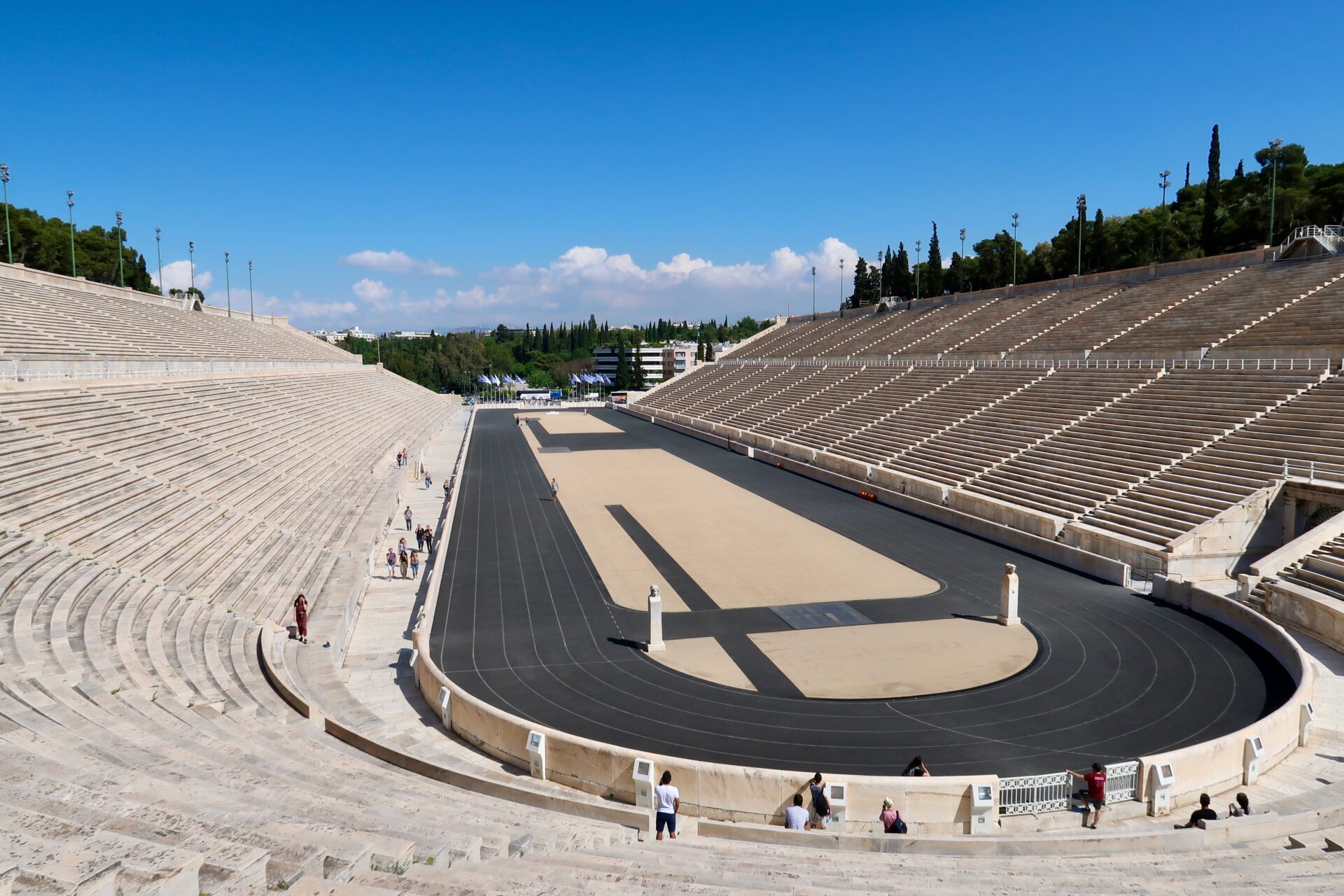
Standing in the middle of it, I can’t help but think about how much pride the Greeks must have felt. Events like these probably shaped the way we think about sports today.
Art and history buffs, don’t skip the Museum of Cycladic Art. It connects perfectly with Anafiotika’s Cycladic vibe.
You’ll find everyday objects, intricate idols, and art from all over the islands. I always end up appreciating both the little village and its storied neighbors a bit more after seeing what’s inside.

